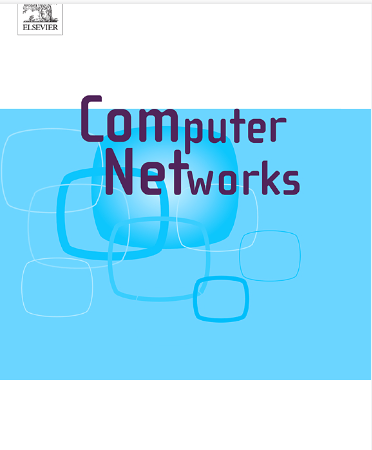Joint optimization of VNF deployment and UAV trajectory planning in Multi-UAV-enabled mobile edge networks
IF 4.4
2区 计算机科学
Q1 COMPUTER SCIENCE, HARDWARE & ARCHITECTURE
引用次数: 0
Abstract
Multi-Unmanned Aerial Vehicle (UAV)-enabled mobile edge networks have emerged as a promising networking paradigm that uses multiple UAVs with limited communication and computation capacities as edge servers to traverse along planned trajectories to visit designated ground users (GUs) for providing network services in partial or no network coverage areas, e.g., disaster areas. Based on network virtualization technology, network services can be flexibly provisioned as virtual network functions (VNFs) deployed at the UAVs. However, given a set of UAVs with initial locations and a set of VNF requests from different GUs on different locations, how to deploy the on-demand VNFs on the limited-capacities UAVs with consideration that which UAV should carry which VNFs to serve which requests, and then plan trajectories for each UAV to visit their target GUs to complete its serving task, aiming to minimize both the energy consumption of the UAVs and the cost of UAVs accepting requests, is a challenging problem, where the cost UAVs accepting requests is composed of the instantiation cost of deploying VNFs and the computing cost of processing GU requests in the VNFs. In this paper, since the VNF deployment and the UAV trajectory planning have coupling effect, we focus on joint optimization of the two operations. We firstly formulate it as a nonconvex mixed integer non-linear programming problem. Then, we propose a hierarchical hybrid deep reinforcement learning algorithm based on jointly optimizing discrete and continuous action to solve the problem. Finally, we evaluate the performance of the proposed algorithm and the simulation results demonstrate its effectiveness.
求助全文
约1分钟内获得全文
求助全文
来源期刊

Computer Networks
工程技术-电信学
CiteScore
10.80
自引率
3.60%
发文量
434
审稿时长
8.6 months
期刊介绍:
Computer Networks is an international, archival journal providing a publication vehicle for complete coverage of all topics of interest to those involved in the computer communications networking area. The audience includes researchers, managers and operators of networks as well as designers and implementors. The Editorial Board will consider any material for publication that is of interest to those groups.
 求助内容:
求助内容: 应助结果提醒方式:
应助结果提醒方式:


